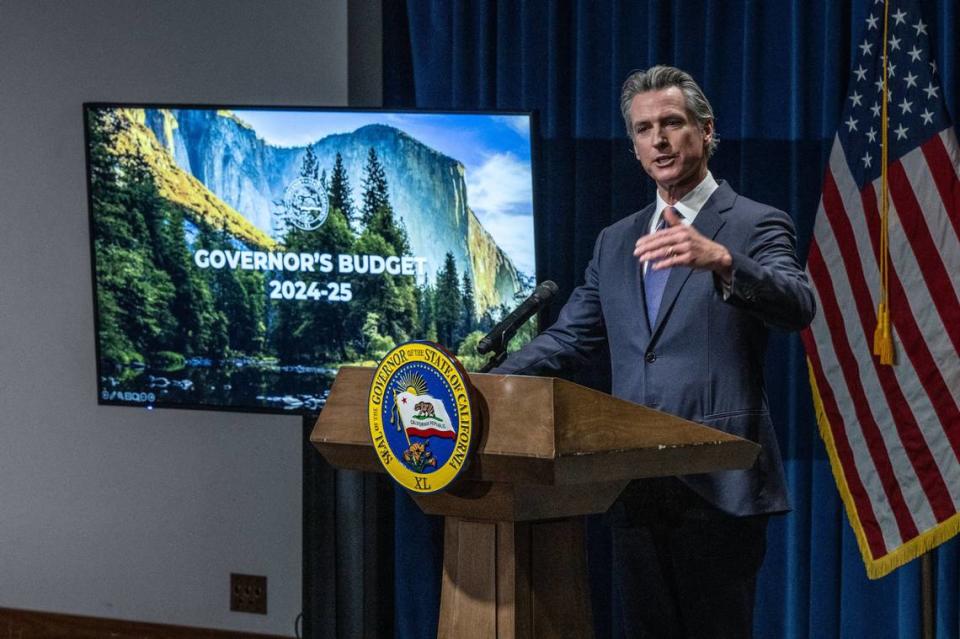California faces an unemployment insurance disaster. Newsom has no easy way out | Opinion
When California published its fiscal year 2022 audited financial statements nearly a year late this March, buried within the document was an admission that the state is still struggling with unemployment insurance fraud from pandemic spending programs.
California estimates that from July 1, 2020 to June 30, 2023, improper unemployment insurance payments totaled $6.08 billion — an overpayment rate of 20.1%, more than double the allowable rate of improper payments by federal law.
Opinion
To understand how California got into this mess, it’s important to look at federal pandemic unemployment programs. During that time, the federal government increased unemployment insurance benefits and relaxed conditions for receiving them. Applicants no longer needed to be actively seeking work and did not need to prove they left work due to an “employer action” such as a layoff.
It was a gold rush. In addition to regular unemployment insurance payments, recipients received a bonus payment of $600 per week until July 31, 2020, and then a $300 per week bonus payment through September 2021. Two unemployed parents with two dependent children in California could receive unemployment insurance benefits equivalent to an annual salary of $109,062 during the duration of the program.
This led the state to some of the highest unemployment rates in America. The Bureau of Labor Statistics found that California was one of the easiest states to access unemployment insurance during the pandemic, with 83% of all applicants (about a tenth of California adults) successfully receiving benefits. Research shows that recipients are likely to wait to get back to work until just before these benefits run out.
Furthermore, these unemployment insurance benefits are exempt from state income taxes. So, not only did participants receive generous benefits from the taxpayers, they also didn’t contribute any tax revenues to the state coffers. Millions of able-bodied adults in California who should have been working opted instead to live on the taxpayer dime. Even worse, foreign nationals were able to steal millions of dollars from the program.
Currently, California has the highest unemployment rate in the nation. Meanwhile its unemployment insurance trust fund is empty, relying on nearly $20 billion in loans from the federal government. By contrast, 26 states opted out of pandemic unemployment programs before the 2021 deadline and many of them are solvent and have a surplus, such as Alabama and Utah.
If one thing is clear, it’s that the Golden State is facing an impending fiscal earthquake. Since families and businesses are already fleeing the state in record numbers, straining businesses with higher taxes to refill the unemployment insurance trust fund will only make people run away faster. Therefore, California cannot tax its way out of this problem.
Instead, policymakers must seriously reconsider how unemployment insurance works. Instead of relaxing rules during emergencies, stick to them to keep programs solvent in the long run. Consider personal unemployment insurance savings accounts. These accounts, like individual retirement accounts, nudge workers to save and grow the account while working, withdraw from it when they lose their jobs, but return to work as quickly as possible to build the balance back up again.
Instead of waiting to apply for a job until just before benefits are set to run out, workers will want to find a job so that their personal unemployment insurance savings accounts are not totally drained. If a worker never loses their job, their savings accounts can be used as additional retirement income.
Being generous with other people’s money, politicians in D.C. and Sacramento have set California on a path to economic destruction. They’ve taken the taxpayers’ gold, and played them for fools.
Thomas Savidge is an economist and research fellow at the American Institute for Economic Research. Follow him on X at @thomas_savidge .


